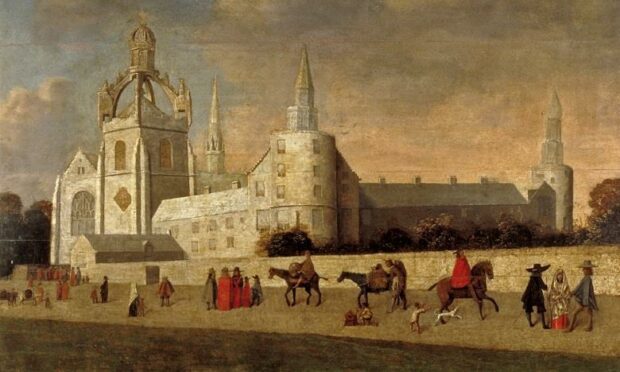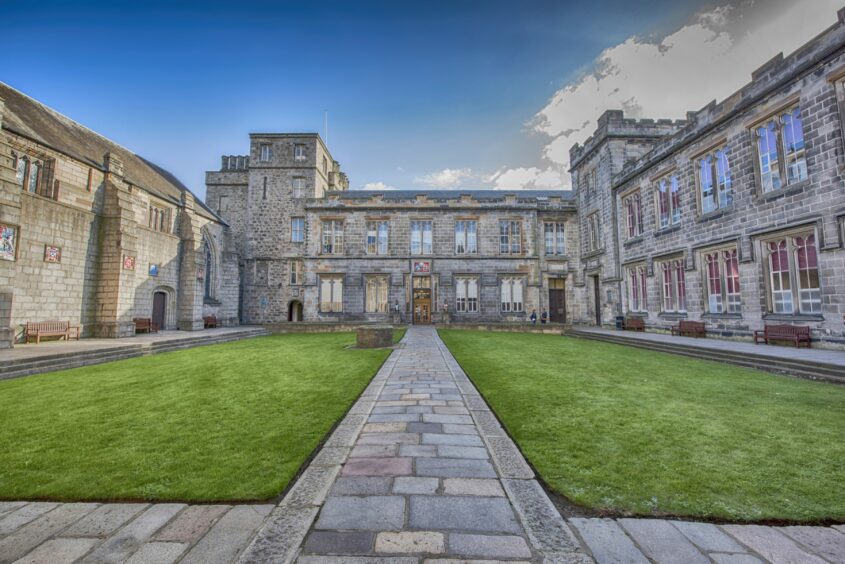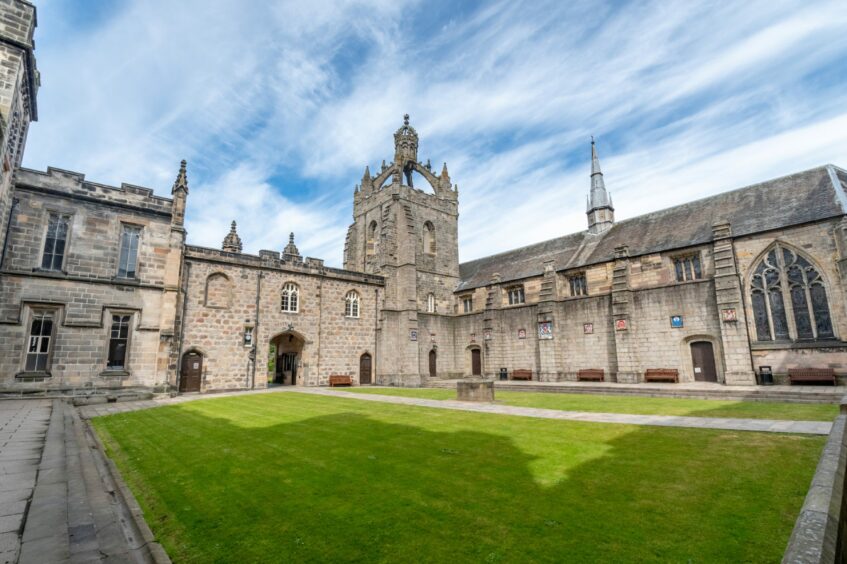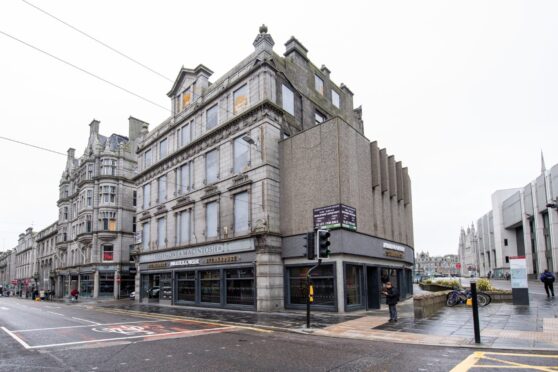Aberdeen University will begin celebrating its 527th birthday next week as plans for a historical look back at its earliest beginnings in the form of a new book are announced.
The book, which will explore key moments and people to have shaped the university’s history, will be released in autumn later this year.
Nearing the final editing stages, the book, which is titled ‘A New History of the University of Aberdeen’, is said to focus more on the international nature of the university.
Cultural history is also set to play a more central role by looking at issues of gender, race and power throughout.
But first, the university will host a Founders’ Day Service in King’s College Chapel at 11am on Sunday February 13, to celebrate its birthday.
The event is for those who who have signed up in advance but there will be a link available to watch online nearer the time.
The University has ‘sought to excel in the pursuit of truth’
The publication draws inspiration from a popular series of podcasts created to mark the University’s anniversary this year. It is edited by Professor Michael Brown, Chair in Irish, Scottish & Enlightenment, and Dr Brad Bow, Lecturer in Scottish History.
Professor Brown said: “This is retelling the story of how Aberdeen rose from a small medieval foundation to a significant hub of intellectual life in the region, nationally and indeed globally, bringing Aberdeen out to the world and just as significantly, bringing the world to Aberdeen.”
He described the university’s consistent academic achievements over the years, mentioning contributions to the Reformation and the Enlightenment. The school has also been associated with five Nobel laureates.
Looking at the university’s history, it has experienced many key moments in history. Whether that was the civil wars in the 1640s, the Union of Crowns of 1707, the disruption of the Church of Scotland in the nineteenth century or the world wars in the twentieth century.
Through all this, Mr Brown said the institution has a “long record of achievement”.
He said: “Throughout it has sought to excel in the pursuit of truth, and it has a long record of achievement that we want to recall, even as we look ahead.”
He added: “With the passing of the significant milestone of 525 years it seemed an appropriate time to embark on a nuanced history of both the institution and its people.”
How the university began
Aberdeen University is Scotland’s third oldest and the UK’s fifth oldest university. It started off as King’s College in 1495 before it merged with Marischal College in 1860 to become the Aberdeen University. It was founded William Elphinstone, Bishop of Aberdeen and Chancellor of Scotland.
Dr Jackson Armstrong, a specialist in the later middle ages, says the new publication which explores the university’s international history reflects these early beginnings.
He said: “Many previous accounts represent King’s College as a new innovation for the north-east, connecting a somehow isolated and remote region of the kingdom to the world of learning.
“But while Aberdeen had no more than a few thousand inhabitants, at the end of the 14th century it was counted in Bruges as amongst the four principal towns of Scotland.”
Mr Armstrong added: “To me, the early history of the university and the context out of which it was created, is about how Bishop Elphinstone’s foundation was as a result of an outward looking, creative and internationally connected Aberdeen.”
“That was a medieval legacy which would continue for centuries to come and which we hope to showcase through this new publication.”
Professor Karin Friedrich, Chair of Early Modern History, agreed with this saying: “The volume on the 525th anniversary of King’s College highlights the important role that Aberdeen University has played since the Renaissance, not only for the north-east of Scotland, but for innovation and exchange between Scotland and Europe.”
Some of the characters included
The book revisits both some well-known figures and also individuals who have been overlooked from Aberdeen University’s history.
Some of the more famous people in the university’s history include Hector Boece (1465-1536), a Scottish philosopher and historian. He also went on to become the first Principal of King’s College.
One of the characters that has been overlooked in the past but whose history is explored in the book is abolitionist Reverend James Ramsay.
An alumnus of King’s College, he was born in Fraserburgh in 1733 and later became an Anglican minister and ship’s surgeon after his studies.
When Ramsay was at sea, he first witnessed the reality of the colonial slave trade after coming into contact with a slave ship travelling from Africa to the West Indies. Dysentery had wiped out most of those enslaved and the crew.
He went on to spend 15 years as a preacher before becoming a medical attendant to the enslaved population on the island of St. Christopher, today known as St. Kitt.
After witnessing the horrific realities of slavery from his at sea encounter, Mr Ramsay sparked controversy with his abolitionist writing. He was titled as “The Unknown Abolitionist” by Nigerian historian, Fọlarin Shyllon as for many years his contributions to the debate were largely overlooked.
This follows recent calls for Aberdeen to be more up front in its role and how it profited from slavery.
A project setting up 11 sites in Aberdeen highlighting key parts of the city linked to the horrific trade has been deferred to March this year.
Visit the Aberdeen University site to listen to the podcast series on the school’s 525 years of history.












